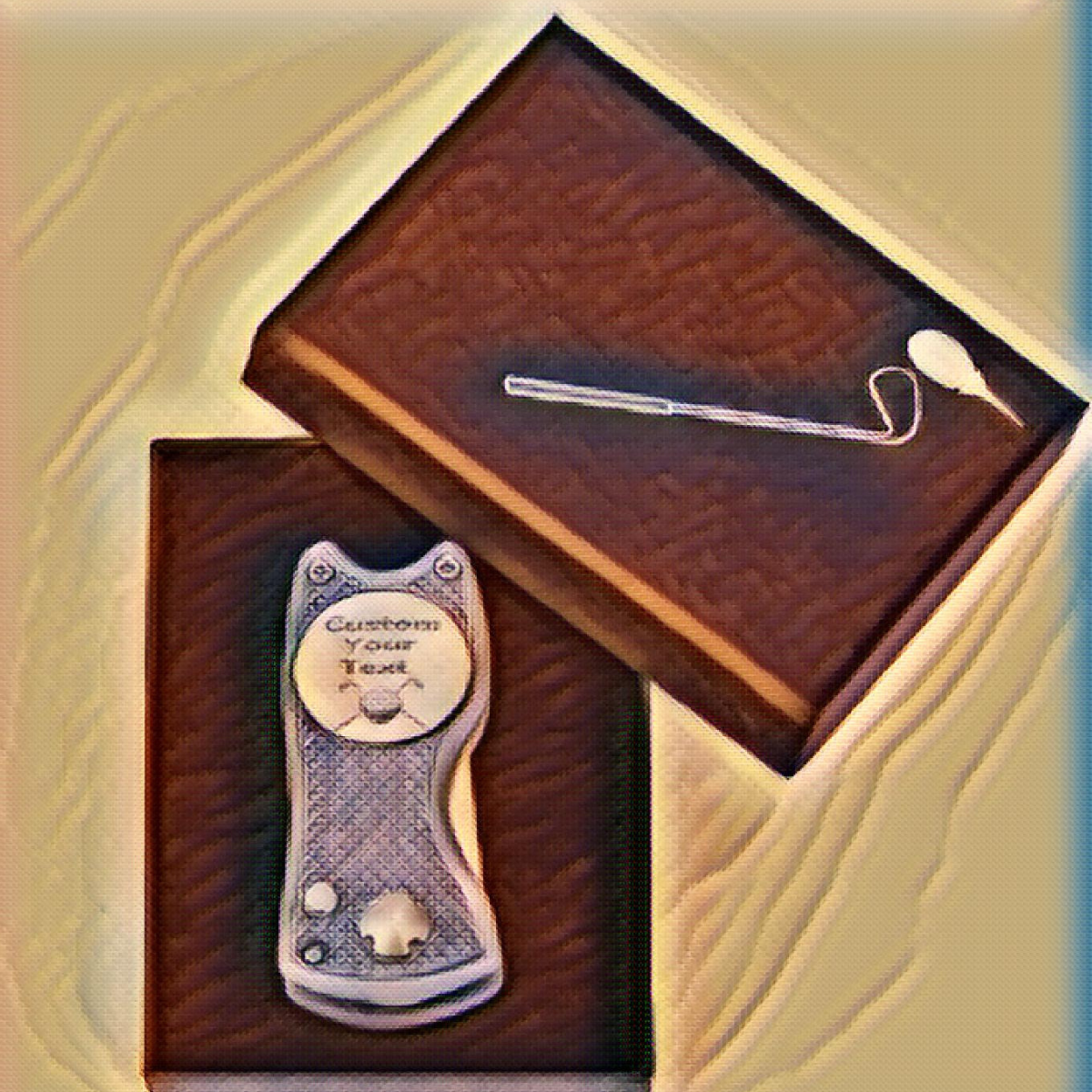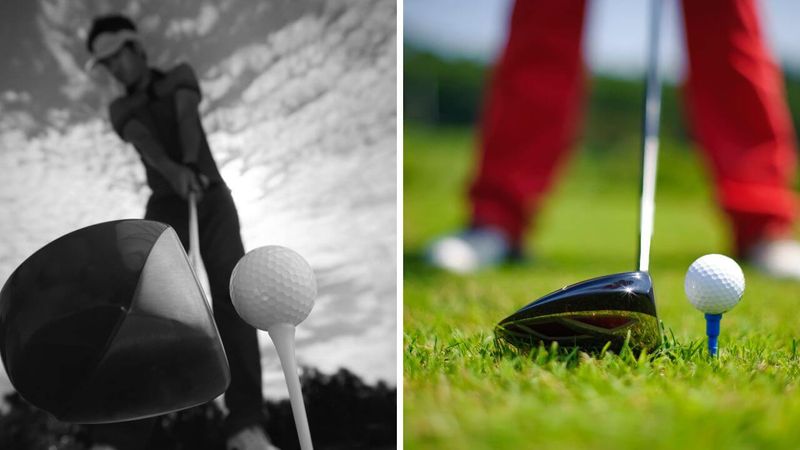Content Summary
The What
Smash factor is a measure of how efficiently the club face transfers energy from the swing into the ball. In other words, it's a measure of how much power you are able to generate when making contact with the ball.
The ball's velocity is only maximized when it hits the "sweet spot" of the object being used to smash it, whether you're playing baseball, tennis, or golf.
It's calculated by ball speed divided by club head speed, and expressed as a percentage. With a higher smash factor more energy is being transferred from the club head to the ball, which results in greater distance and accuracy.
The Math
For example, the ideal smash factor is 1.5. So, let’s say you swing your driver at 90 mph and your average smash factor is 1.45 (145%). This means that your average ball speed would be 131 mph (90 x 1.45 = 131).
Let's examine an illustration: Golfer A achieves a club head speed of 100 MPH and a ball speed of 140 MPH. With 140 divided by 100, that would result in a smash factor of 1.40. Golfer B, in contrast, produces a ball speed of 145 MPH with a clubhead speed of 100 MPH, giving him a Smash Factor of 1.45.
How is it possible for two golfers to produce different ball speeds with the same swing speed? Despite having the same club head speed as Golfer A, Golfer B's greater Smash Factor rating shows that his swing is more effective at transferring energy into the ball.
To put it another way, Golfer A's golf swing sadly demonstrates more problems that can prevent an energy transfer loss.
The higher your smash factor, the farther your drive will go—so if you want to increase your distance off the tee box, improving your smash factor should be one of your primary goals!
Why Smash Factor is an Important Metric
Smash factor is an important metric because it can give golfers valuable insight into the efficiency of their swings.
If your smash factor is low, it could indicate that you are not properly transferring energy from the club to the ball, resulting in less power and accuracy.
By paying attention to this number and making adjustments to your form as needed, you can help to increase the amount of energy that you are transferring and ultimately lower your golf scores.
It is essentially just a number by itself. In the aforementioned scenario, Golfer A and Golfer B don't really benefit from simply knowing that their respective Smash Factors are 1.40 and 1.45.
Smash Factor, however, becomes an essential piece of information in the hands of a knowledgeable coach, someone who can take that figure and translate it into an improvement plan for the golfer.
Golfer A must identify the problems that are reducing the efficiency of his swing in order to fix them if he wants to improve his Smash Factor rating and, consequently, his distance.
This procedure turns the Smash Factor number from raw data into a significant and valuable item.
Factors That Affect Your Smash Factor
There are several factors that can affect your smash factor, such as the type and flex of your club shaft, the loft angle of your club head, how much ball speed you create, your swing speed, the spin rate of the ball, and even the kind of golf ball you use.
By understanding how each one affects your game, you can make more informed decisions
How to Improve Your Smash Factor
How do you improve your smash factor? Well, there are several factors at play here. Clubhead design plays an important role; modern drivers are designed with more efficient aerodynamics for an improved launch angle which can help increase smash factors by up to 10%.
Additionally, improving technique—such as proper grip and stance—can also help increase power transfer efficiency. If you learn to hit the ball with the clubheads' sweet spot you have a better energy transfer.
But how can you know how good you are at producing that energy transfer? Thankfully, there is a tool available to golfers that allows them to measure how effective their present golf club swing is at producing ball speed.
It's called a launch monitor. Using a launch monitor such as a Garmin or Flightscope can help golfers analyze their swing mechanics in order to determine where they can make improvements that will result in increased club speed which increases distances and improves accuracy.
There are several more ways that you can work on improving your smash factor. One way is to focus on maintaining proper form when swinging.
This includes making sure that your arms, wrists, and club head are all in alignment throughout the swing.
Additionally, you can focus on increasing your club head speed by practicing with heavier clubs and/or working on strengthening your arms, wrists, and hands.
Finally, practicing drills such as attack angle drills can help to increase the accuracy of your swings.
FAQ's
We've compiled a list of the most frequently asked questions about smash factor in golf so you can know more about this important concept.
What is a good smash factor for each club?
On driver strokes, a golfer would aim for a smash factor of around 1.50. Thus, the ball would travel at a speed of 150 mph for a club traveling at 100 mph.
The smash factor is anticipated to be lower the higher the loft of the club. A PW's smash factor should be close to 1.25.
How do you increase your smash factor in golf?
Smash factor is a measure of the efficiency of your swing, calculated by dividing the ball speed by the club head speed.
To increase your smash factor, you need to focus on improving your swing mechanics. Some tips to help you increase your smash factor include: ensuring a proper grip and stance, focusing on a smooth and balanced swing, and working on your club head speed and acceleration.
Additionally, you can use a launch monitor to track your progress and identify areas for improvement.
Is smash factor important in golf?
Yes, smash factor is an important factor in golf. Smash factor is the ratio of clubhead speed to ball speed, and it is a key factor in determining how far a golf ball will travel.
A higher smash factor indicates that the player is generating more clubhead speed, which translates to more distance.
A lower smash factor indicates that the player is not generating as much clubhead speed and therefore the ball will not travel as far.
Improving your smash factor can help you hit the ball farther and improve your golf game.
What is a good Smash Factor driver?
A good Smash Factor driver is one that has a high coefficient of restitution (COR). The COR measures the amount of energy that is transferred from the club head to the golf ball.
The higher the COR, the more energy is transferred to the ball, resulting in a higher Smash Factor. Generally, drivers with a COR of 0.83 or higher are considered to have a good Smash Factor.
Additionally, drivers with a larger head size, a lower center of gravity, and a higher launch angle are also beneficial for achieving a higher Smash Factor.
Bonus Question - What should my smash Factor be with a 7 iron?
The smash factor is the ratio of ball speed to clubhead speed. For a 7 iron, your smash factor should be around 1.35.
This means that your ball speed should be 1.35 times your clubhead speed. An ideal smash factor for a 7 iron should be between 1.33 and 1.37.
Conclusion
Smash factor is an important concept for golfers looking to maximize their distance off the tee box and have fun with their golf game.
Since the optimal smash factor is 1.5 golfers can analyze their swing mechanics with a launch monitor and by making adjustments accordingly, they can ensure they are optimizing their power transfer efficiency and getting maximum results from every swing!
So next time someone mentions “smash factor” around the clubhouse – now you know what they’re talking about!
Thank you for visiting, and we hope to see you back soon!

Note: We use affiliate links and may receive a small commission on purchases at no additional cost to you.







